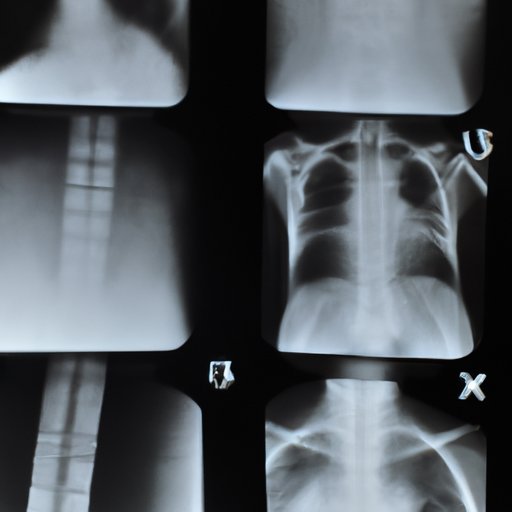Introduction
X-rays are a type of radiation that can be used to create images of the inside of the body. They have been used in medical diagnosis since the early 1900s and are now one of the most common diagnostic tools used in healthcare. But when were x rays invented? This article will explore the history of x-ray technology and its impact on healthcare.
A Timeline of X-Ray Technology: When Were X Rays Invented?
The history of x-ray technology dates back to 1895, when German physicist Wilhelm Conrad Röntgen discovered the existence of x-rays. His experiments with cathode ray tubes led him to conclude that there was an invisible form of radiation that could penetrate solid objects. He called this new form of radiation “x-rays” due to their unknown nature.
Röntgen’s discovery of x-rays sparked a flurry of research and development of the technology. Within a year of his discovery, x-ray technology was being used in medical diagnosis. By 1896, the first x-ray machine was developed and used to image bones and other organs. Within a decade, the technology had advanced enough to allow for the diagnosis of diseases such as tuberculosis, cancer, and heart disease.
In the early 1900s, the use of x-rays began to expand beyond medical diagnosis. The technology was used to detect flaws in metal castings and to inspect welds and seams in manufactured products. X-rays were also used in the military to detect explosives. By the mid-1900s, x-ray machines were commonplace in hospitals and doctors’ offices.
From Discovery to Diagnosis: The History of X-Rays
X-rays revolutionized medicine by allowing doctors to diagnose illnesses quickly and accurately. Prior to the invention of x-ray technology, diagnosis was often based on symptoms and physical examination alone. With the introduction of x-rays, doctors could see inside the body without invasive surgery, which allowed for more precise diagnosis and treatment of diseases.
In addition to diagnosis, x-ray technology has been used for many other purposes throughout its history. Researchers have used x-rays to study the structure of molecules, while scientists have used them to study the properties of stars and galaxies. X-rays have even been used in art restoration, helping to reveal the hidden details of artwork.
How the X-Ray Revolutionized Medicine
The introduction of x-ray technology revolutionized healthcare by making diagnosis faster and more accurate. X-rays can be used to detect a wide range of conditions, from fractures and tumors to cardiovascular diseases and infections. X-rays are also used to guide surgeons during minimally invasive procedures, such as biopsies and catheterizations.
Over the years, the use of x-rays in healthcare has expanded. Today, x-rays are used not only to diagnose diseases, but also to monitor treatments and assess the progress of healing. X-rays can also be used to detect abnormalities in unborn babies, helping doctors identify potential health risks before birth.
The Pioneers Behind X-Ray Technology
Wilhelm Conrad Röntgen is widely regarded as the father of x-ray technology. His discovery of x-rays in 1895 changed the face of medicine and opened up a world of possibilities. Without his pioneering work, the use of x-rays in healthcare would not have been possible.
Other pioneers of x-ray technology include American physicist William Coolidge, who developed the first practical x-ray tube in 1913, and British physicist John Randall, who developed the first commercial x-ray machine in 1925. These innovators helped make x-ray technology more accessible and paved the way for its widespread use in healthcare.
What Have We Learned Since X-Rays Were First Discovered?
Since x-rays were first discovered, the technology has continued to evolve. Advances in technology have made x-rays safer and more precise. Digital x-ray systems, for example, use less radiation than traditional film-based systems and produce higher quality images.
Today, x-rays are used in a variety of ways in healthcare. They are used to diagnose a wide range of conditions, from broken bones to cancer. X-rays can also be used to guide surgeons during minimally invasive procedures, such as biopsies and catheterizations. X-ray technology has come a long way since its invention and continues to play an important role in modern healthcare.
Conclusion
X-ray technology has revolutionized medicine since its invention in 1895. X-rays allow doctors to diagnose diseases quickly and accurately, without the need for invasive surgery. They are also used to guide surgeons during minimally invasive procedures and to monitor treatment progress. Wilhelm Conrad Röntgen, William Coolidge, and John Randall are among the pioneers behind x-ray technology, whose pioneering work made x-rays a staple of modern healthcare.
(Note: Is this article not meeting your expectations? Do you have knowledge or insights to share? Unlock new opportunities and expand your reach by joining our authors team. Click Registration to join us and share your expertise with our readers.)
